Whether it’s a washer, a dryer, or a washer-dryer, spinning is at the heart of the appliance’s functionality. If the machine stops spinning, it’s no longer performing. The laundry will not get cleaned or dried.
So it’s important to pay attention not just to the spinning cycles of the washer/dryer, but also to the speed of the spinning and why it has different spinning programs in the first place.
The spin cycle of the washer forces moisture out of the laundry to render it as dry or close to dry as possible. The spin cycle speed determines how quickly and efficiently the machine dries the laundry.
But high speed isn’t always good, especially with delicate and sensitive fabrics. Many machines now also have an anti-crease feature to prevent wrinkles.
If the new washer dryer is a little confusing to decipher with all the settings, dials, and knobs on the panel and you still can’t figure out which spin cycle is the right one for which types of clothes, this comprehensive guide is for you.
Read more to find out how to navigate the intricate interface of the modern washer (and dryer!) and set the machine to the right speed every time.
Spin Cycles Explained
Once your washer starts spinning, you consider your part of the job to be over, and you go back to your daily life until the machine alerts you with its melodic tunes that the laundry is done.
But you never stopped to ask yourself whether the spin speed is adequate for these types of fabrics or not. Or whether you’re using too much energy when you could have got the laundry dried out with a more economical cycle.
What is a Spin Speed?
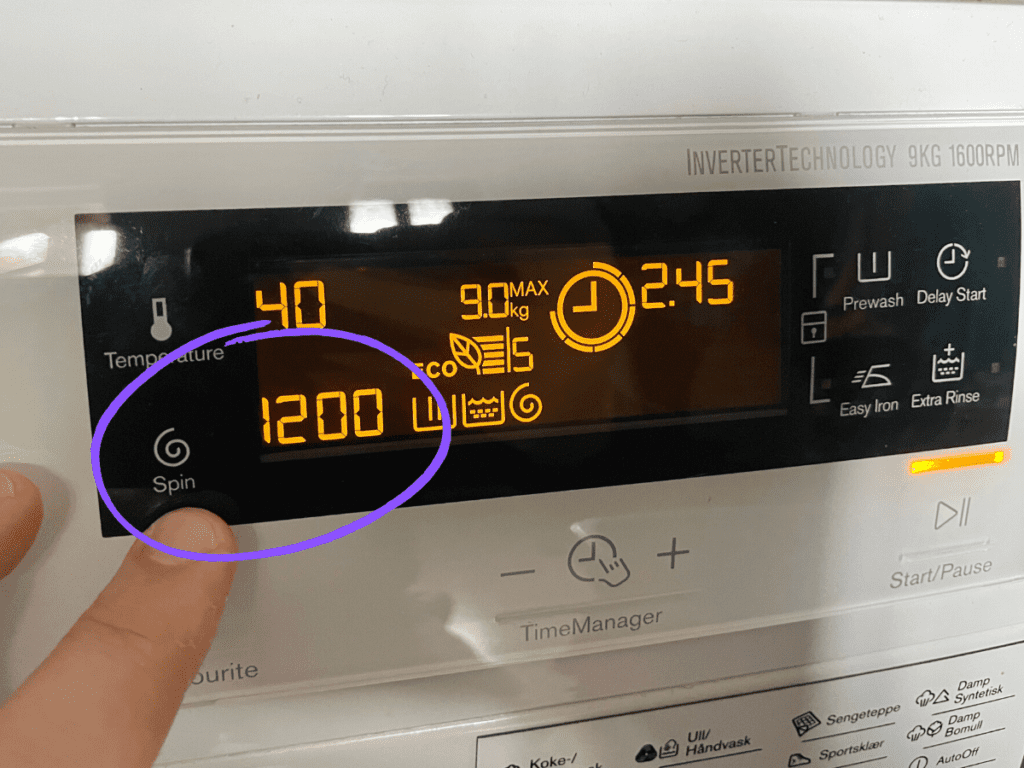
Spin speed refers to how many revolutions per minute (RPM) the washer is going to achieve during the spin cycle. The higher the speed, the better since it will extract every last drop of moisture out of the laundry.
But not all laundry needs high speed. High speed often creates creases and wrinkles in the clothes, and it can damage nylons, underwear, and other expensive fabrics.
Some machines have different spin cycles that allow you to adjust the speed the washer will run at. The more cycles available for you, the better control you have over the machine and how fast it will go.
That way, you can set it to the right speed for the type of laundry you’re doing. Delicates will require a slow spin cycle, while cottons, denim, and bed sheets need higher speeds.
Spin Cycle Speeds
We all want our laundry to go into the washer dirty and come out of the dryer clean and dry. And we all want it done in record time. Top-tier washer dryers allow you the luxury of choosing the right speed for your laundry.
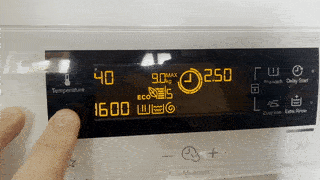
You can tell that the washer is top-notch, not just by the steep price tag but also by the number of settings, programs, and options available for you on the panel.
Depending on the model and brand, your washer-dryer might have between 2 to 4 spin cycles, and they might have different names.
For example, you could have “Dry,” “Ready To Wear,” and “Refresh” as spin cycles. Or you could have different other names. The manual usually explains what each spin cycle signifies and which type of fabrics it works for best.
But regardless of the nomenclature, the spin cycles often refer to the different speeds the machine is pre-programmed to perform at. These speeds are often correlated to different types of fabrics. Here’s the low down of the different speeds and which fabrics are suited for each one.
| Spin Speed (RPM) | Fabric | Clothes |
| 600 | Delicates, blends, synthetics | Lacy underwear, dress shirts, office wear. |
| 900 | Denim | Jeans, denim jackets, denim skirts |
| 1200 | Wool | Sweaters, jackets, cardigans |
| 1400 | Cotton | Towels, bed sheets, underwear, T-shirts. |
Another feature you should look for in the washer-dryer is anti-crease. When the clothes spin at high speeds, creases set in, and they become harder to iron once the garment is dry.
Moreover, at this high speed, the clothes get tangled, and long sleeves turn into a knot that makes extracting the clothes an ordeal. That’s where the anti-crease comes in.
The anti-crease is when the machine slows down the spinning considerably to allow the entangled clothes to become undone and prevent wrinkles and creases from setting.
Usually, this is part of each programmed cycle, and you don’t have to do anything to activate it. But you should check for this feature when browsing for new washers or washer dryers. It will save you a lot of stress.
Spin Speed and Energy Consumption
When we talk about doing the laundry, we often overlook the costs involved in this intricate process. Until the electricity bill arrives and we’re shocked at how much energy the washer dryer has consumed.
Admittedly, the majority of the energy the washer-dryer consumes goes into heating the water to the right temperature. But that doesn’t mean that the spinning doesn’t take up power as well.
High utility bills can be reduced by choosing economy modes on the washer and setting the dryer to the proper spin speed that suits the laundry.
To give you an idea of how much energy is spent in the spin cycle alone, the following table breaks down the different speed cycles of the dryer, how much dampness is removed, and how much energy is required.
| Spin Speed | Moisture Removed | Energy Spent Per Cycle |
| 800 | 30% | 4 kWh |
| 1000 | 40% | 3.7 kWh |
| 1200 | 47% | 3.3 kWh |
| 1400 | 50% | 3.1 kWh |
| 1800 | 58% | 2.6 kWh |
Not surprisingly, the higher the spin speed, the more moisture that gets extracted from the laundry. But what’s really surprising is the amount of energy that each speed consumes.
As it turns out, the higher the speed, the less energy the dryer consumes. This is one of the main reasons that machines with higher RPM are preferred over those that run at moderate or slow speeds.
So while setting the machine at a high spin speed seems like the best option in terms of getting the job done quicker and saving energy, it’s not always the right thing to do. You need to think about the materials and fabrics you’re drying and whether the high speed will damage the clothes or not.
This is why the washer dryer comes with so many spin cycles and settings to fine-tune the process and make it customizable.
I also wrote an article on the best times of day to do laundry to save on electric costs that may interest you.
Which Spin Cycle is the Noisiest?
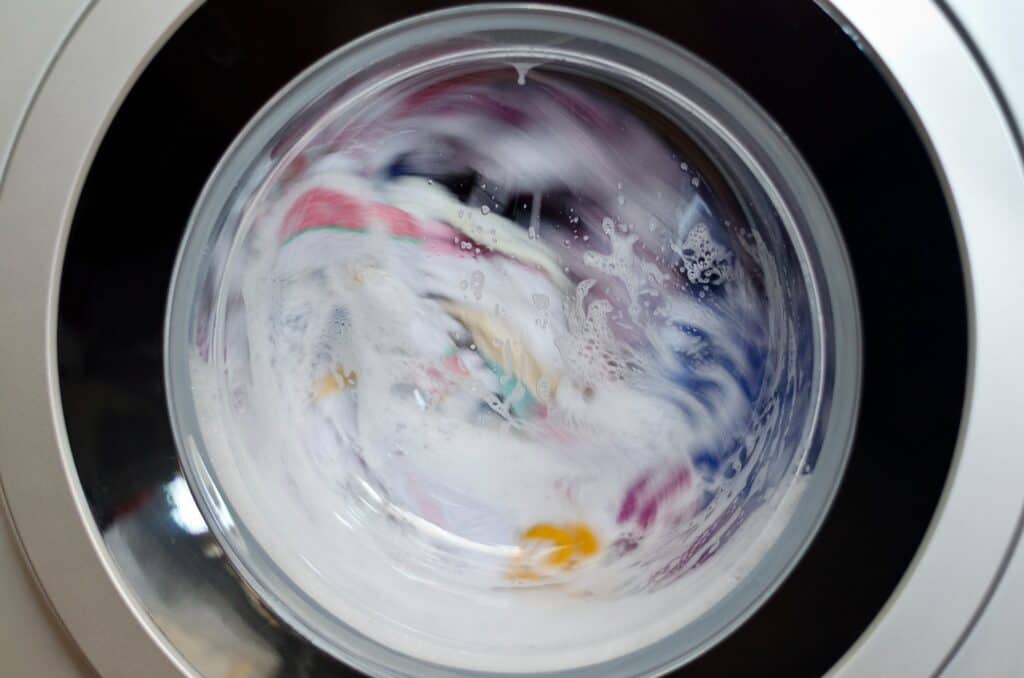
If your washer dryer is making noise, chances are it’s either malfunctioning and needs a professional to fix it, or it’s the machine itself getting old. New washers and dryers tend to suppress noise quite well as long as they run on regular programs.
But if you set it to a high-speed setting, there’s a good chance that you’d hear more than a hum or a droning sound coming out of it.
Sometimes that sound can turn into a long wailing sound that gets higher and higher as the machine reaches its maximum spinning speed. All of this is normal and shouldn’t be cause for concern.
However, if the noise irritates you, then try setting the dryer to lower speeds. You’ll notice that the grating noise has gone down a few decibels and become less noticeable.
Most washers and dryers will generally emit a purring sound at speeds between 800 and 1200 RPM. But if they go above 1200 RPM, that’s when the alarming noise starts.
This can be annoying if the washer and dryer is within earshot of the living area or, worse, the bedroom. But if it’s in the basement or the kitchen, then chances are that high-pitched noise will disappear in the background noise.
Which Spin Cycle Discards the Most Water?
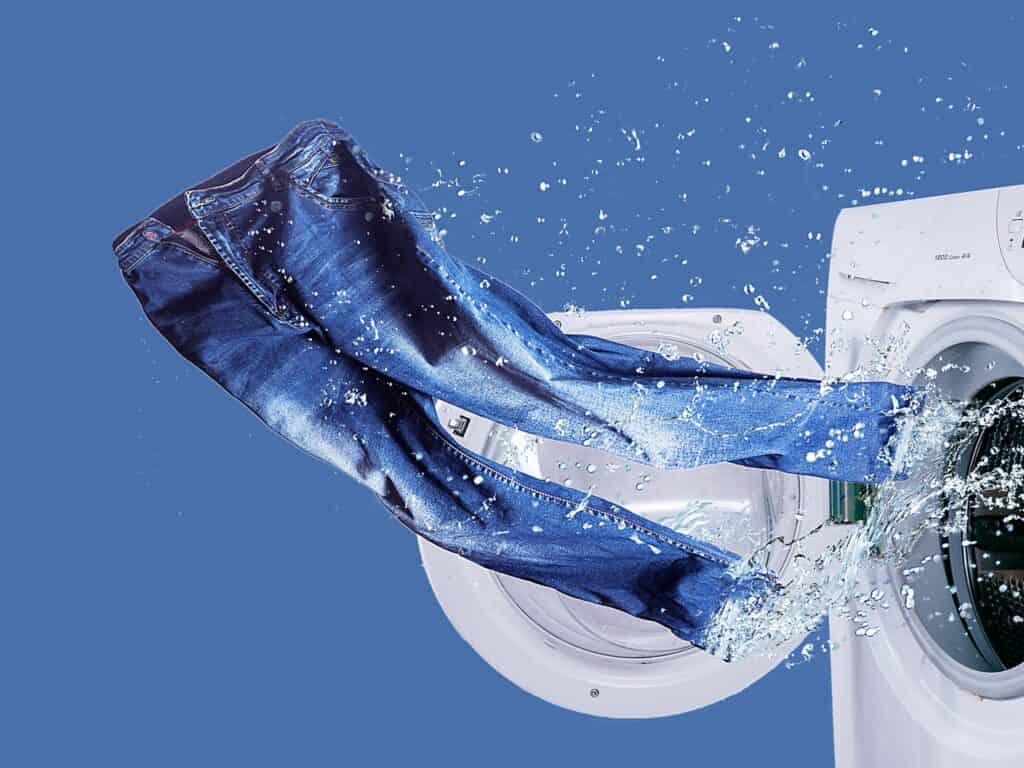
The dryer has only one job: to extract as much of the moisture out of the wet laundry as it can. Some dryers do this efficiently and give you laundry that’s one step away from being fully dry. Others turn out clothes that are just as wet as they went in.
This doesn’t have to be the dryer’s fault. If the load is too heavy with tough garments such as denim and towels, then the dryer will do a poor job.
But all things equal, it’s often the spin cycle you choose that determines how successful the dryer would be in extracting the most water out of the clothes. As the table in the previous sections indicates, slow cycles extract the least amount of moisture and consume the most amount of energy doing so.
The faster cycles above 1400 RPM, on the other hand, do a good job discarding the most moisture out of the wet laundry.
But that same table is up there for a reason. It tells you what type of clothes go with which spin speed. Jeans, for example, are sturdy fabrics that absorb a lot of water and do not give up on it easily.
But you can’t put the jeans through a high-speed cycle. That could damage the fabrics and fade the colors. Instead, you just have to put them in a medium 900 RPM spin cycle and accept that they will still be wet by the end of the cycle.
Washer Dryer Cycles
Now that we have seen what each spin cycle means and does to the clothes, it’s worth taking the time to look at the washer cycles themselves.
Although the main principles of higher speed equal less energy consumption and more efficiency that applies to the spin cycles also apply to the washer cycles, your washer often has far more programs than the dryer.
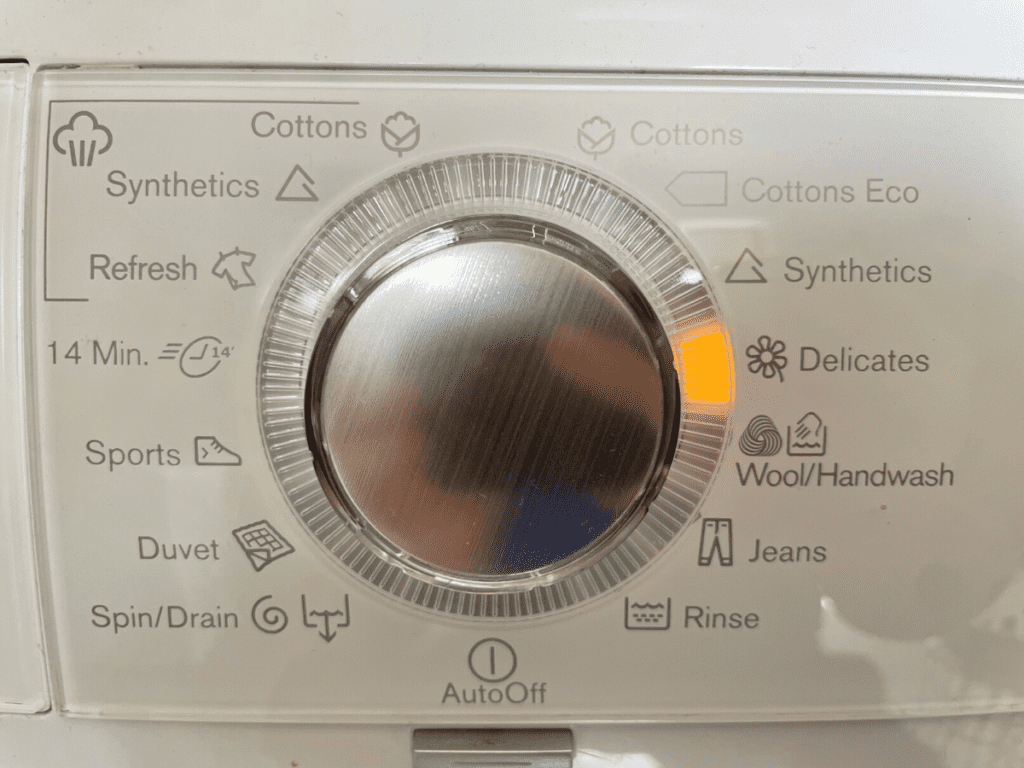
The names and number of the washer cycles on your machine might vary from those on other machines. Generally speaking, the more expensive the washer, the more settings and features it has. But here, I’ll try to give a bird’s eye view of the most common cycles that most washers would have.
Normal
This cycle is sometimes called Regular or Daily Wash or any other name to signify that it’s the standard cycle to use for everyday laundry. It has high agitation and a lengthy period of time that doesn’t go under one hour.
Here you can wash cotton, linen, durables, synthetics, and denim. T-shirts, bed sheets, towels, jeans, and other homewear belong to this cycle.
Permanent Press
This cycle is designed for all wash-and-wear and wrinkle-free clothes that were all the rage in the middle of the 20th century. It takes less time than the Normal cycle and doesn’t agitate the synthetic clothes as hard either. It’s mostly for thin clothes that don’t get very dirty and can’t handle heavy-duty detergents.
Delicates
This is one of the gentlest cycles across all washers. It treats the fabrics as if they were fragile and handles them with the same care as handwashing. No excessive agitation nor slamming the clothes against the drum like it’s a wrestling match.
Quite the contrary. It’s all smooth sailing for the clothes with hardly any spinning. It’s a short cycle to wash your nylons, lacy underwear, and other delicate fabrics.
Heavy Duty
That tough cycle is where the washer tests its chops on the toughest and dirtiest clothes you can throw at it. There are no holds barred with this cycle.
Agitation goes to the extreme, and the machine gives the clothes all it got. You will need some heavy-duty detergent to help the washer clean the laundry. But you should also pretreat any stains that might resist the rough treatment of the heavy-duty cycle.
Conclusion
Washers, dryers, and washer-dryers all have different spin cycles that work with different types of clothes and give different results. Spin speeds under 1000 RPM tend to consume more electricity while extracting less moisture. Speeds higher than 1200 RPM give the best results and use up less energy.
I’ve created a comprehensive guide on how to use all the settings on your washing machine that may interest you to read next.

I’m an expert wardrobe organizer and a bit of a clean freak. I created this website and its YouTube channel to share practical guides about laundry and organizing. My teachings have been featured in multiple large news publications, and I’ve self-published two wardrobe organizing books and an entire course on the subject.

Liz
Sunday 23rd of October 2022
Hi Tor, Thank-you for all your info. I am trying to find which top loader washing machine/s have a spin speed of 1200-1400 for cotton wash available in New Zealand.
Can you suggest please.